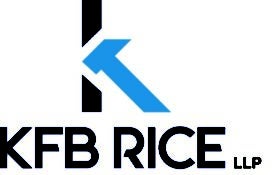ABLE ACCOUNTS IN TORRANCE, CA
WHAT IS AN ABLE ACCOUNT?
CHANGES MADE BY THE TAX CUTS AND JOBS ACT
Here are the three changes made by the Tax Cuts and Jobs Act:
1. Additional ABLE contributions are allowed.
Contributions to an ABLE account can be made by the designated beneficiary or any other person. However, until now, the total annual contributions by all persons couldn’t exceed the amount of the gift tax exclusion for that year. For 2018, that figure is $15,000.
The Tax Cuts and Jobs Act allows the designated beneficiary (but no other person) to make additional contributions in excess of this limit. To be eligible to make these contributions, the designated beneficiary must be employed or self-employed and must not be covered by an employer’s retirement saving plan.
The additional contributions are limited to the lesser of (1) the previous year’s poverty line for a one-person household or (2) the designated beneficiary’s taxable compensation for the current year.
For 2017, the federal poverty line for a one-person household was $12,060 for the 48 contiguous states and the District of Columbia. So, the additional contributions for 2018 can’t exceed that amount.
A designated beneficiary can contribute the full $12,060 for 2018 if the beneficiary’s 2018 taxable compensation is at least that much. When added to the original $15,000, that allows a total of $27,060 in contributions.
If the beneficiary’s compensation is less than $12,060, the additional contributions are limited to the amount of the compensation.
2. Saver’s credit allowed for designated beneficiary’s ABLE contributions.
An eligible lower-income taxpayer can claim a nonrefundable saver’s credit for a percentage of up to $2,000 of retirement savings contributions. The applicable percentage (50%, 20%, or 10%) depends on filing status and adjusted gross income. The maximum saver’s credit is $1,000 ($2,000 contribution × 50% credit percentage).
The saver’s credit is available for contributions to 401(k) plans, traditional or Roth IRAs, and certain other retirement plans. Until now, it wasn’t available for contributions to an ABLE account.
The Tax Cuts and Jobs Act changed this by making ABLE account contributions by the designated beneficiary eligible for the saver’s credit. A beneficiary who qualifies for this credit can have the ABLE contributions partly subsidized through a tax credit.
3. Tax-free rollovers from 529 accounts to ABLE accounts.
In addition to ABLE accounts, the tax law also provides for qualified tuition programs, also known as 529 plans. These have tax features similar to ABLE accounts, but are used to pay for the education expenses of a designated beneficiary, who needn’t be disabled.
It sometimes happens that the beneficiary of a 529 account has finished with school but still has funds remaining in the account. If the beneficiary takes a distribution of the balance, there will be a tax bill to pay that includes a 10% penalty tax.
One possible solution is to take a distribution from the 529 account and roll it over within 60 days to a 529 account for the benefit of a member of the designated beneficiary’s family. The tax deferral will continue in the family member’s account.
Until now, a distribution from a 529 account couldn’t be rolled over to an ABLE account. The Tax Cuts and Jobs Act changes this rule, allowing a 60-day rollover from a designated beneficiary’s 529 account to that same beneficiary’s ABLE account. However, this would only work if the beneficiary is disabled or blind and has an ABLE account.
Alternatively, a 60-day rollover is possible from a 529 account to the ABLE account of a member of the family of the 529 account’s beneficiary. A family member is defined broadly for this purpose. It includes the designated beneficiary’s spouse; child or descendant of a child; brother, sister, stepbrother, or stepsister; father, mother, or ancestor of either; stepfather or stepmother; niece or nephew; aunt or uncle; in-law; or the spouse of any of the above. It also includes a first cousin, but not a first cousin’s spouse.
So, for example, a beneficiary who has no use for the balance in a 529 account can take a distribution from the account and roll it over within 60 days to an ABLE account for the beneficiary’s niece who is disabled or blind. No tax is due on the distribution, and the tax deferral continues in the niece’s ABLE account.
There’s a dollar limit on the amount that can be rolled over in this way. The rollover amount, when added to other contributions to the ABLE account for the year, can’t exceed the gift tax exclusion amount for the year, which is $15,000 for 2018.
I hope this information gives you a basic understanding of these ABLE account changes. Please call me if you wish to discuss how they or any of the many other new tax rules in the Tax Cuts and Jobs Act might affect your particular situation, and the planning steps you might consider in response to them. Please feel free to contact the Law Offices of David Lee Rice, APLC at 310-402-2844 for a consultation.
What Sets Us Apart?
- Over 3 Decades of Experience
- Specialist in taxation through the California Board of Legal Specialization
- Certified as a specialist in elder law through the National Association of Elder Law Attorneys

